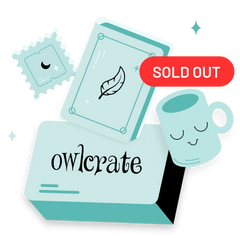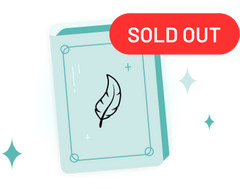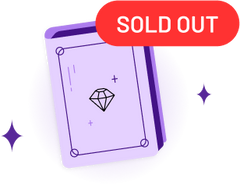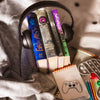Helping Students tell a Story across Genres
By: OwlCrate JrHow do we tell and consume stories in our present day? How can we encourage our students to embrace different mediums to tell stories of their own? Today we are turning things over to Betsy Potash of Spark Creativity to answer these questions.
Betsy is a former high school teacher turned curriculum developer and host of the Spark Creativity Teacher Podcast. She has a contagious passion for bringing fun and innovative ideas into education, and we are so thrilled to share her insights with you! Make sure to check out her website for tons of advice, ideas to bring into the classroom, and free resources!
Take it away, Betsy!
When we read a story today, how often does it stand alone? Words only? More likely we see slowly flickering photos to complement the story, hear an audio clip of a related interview or piece of music, or watch a video help tell the story we’re reading.
Online journalism and social media both prioritize multiple genres in storytelling. The world our students live in knits together the visual and the verbal, telling vivid stories through TikTok videos and podcasts as well as books.
That’s why I love it when we can include books in our curriculum that play across genres, and why I suggest you consider integrating storytelling across forms into your teaching.
Let me give you an example. The collection We Rise, We Resist, We Raise our Voices, edited by Wade and Cheryl Hudson, does a beautiful job of approaching one important question through letters, stories, artwork, photography, and more. Students can explore the work of fifty contributors around the same subject: In a world divided, what can we tell young people to give them hope?
Exploring a multigenre text like this one in class gives you a beautiful springboard for students to create multigenre work of their own. Where you might normally teach the personal essay, why not try a multigenre exploration of student stories instead? Let me show you how.

As you craft your assignment for students to tell a multigenre story of their own lives, think about three categories of expression —writing, telling, and showing.
In the writing category, students can share a piece of their story through a poem, a written dialogue, a journal entry, a narrative.
In the telling category, they might record a conversation or an interview, a personal story, sounds related to their story, or an original piece of music. Your students can use the free (and incredibly easy) tool Vocaroo to create their recordings.
In the showing category, they might create a piece of art related to their story like a series of photos or sketches, or record a short video clip.
There’s so much room for you to design this project however you think it would work for your students. You can keep it simple, maybe asking for one visual, one written element, and a short audio recording of some kind. Or you can give students freedom to create as they wish, mixing and matching however many elements you want to assign.
Google slides is an easy way to house multigenre pieces. Your students can type their written pieces, drop in visuals with the image tool, and link to audio and video.
Once they have an audio file or a video file they want to use in their piece, they can upload it to their Drive, set it to “anyone with the link can view” and then link to it in their multigenre piece with the “insert - audio” or “insert - video” tools.


If you’d prefer they create their piece in printable form, they can use a free QR code generator like this one to add multimedia elements from online through a QR code on their paper.
However you structure your multigenre project, save time at the end for students to explore each other’s work in a physical or virtual gallery walk, reading/hearing/viewing each other’s stories. Perhaps you can even create a showcase of their work linked to your school’s website, available for parents and other community members to experience.
Adding a multigenre twist to a writing assignment you’re already using can be an easy way to help it feel more engaging and relevant to your students. Don’t let the technology intimidate you, helping students learn to record vocal and video clips and use QR codes will be an asset to them in their education, and it’s OK to learn alongside them!
This article was written by Betsy Potash. She lives, writes, rollerblades and tries the wildest gelato flavors she can find in Bratislava, Slovakia. Tune in to teaching ideas from Betsy anytime on The Spark Creativity Teacher Podcast.




 Drinkware
Drinkware Wearables
Wearables Home & Living
Home & Living Bags
Bags Bath & Body
Bath & Body Jewelry
Jewelry Pins
Pins Stationery
Stationery Candles
Candles Bits and Bobs
Bits and Bobs Stickers
Stickers Bookmarks
Bookmarks








